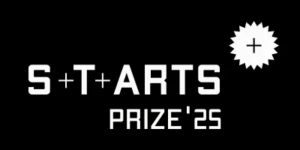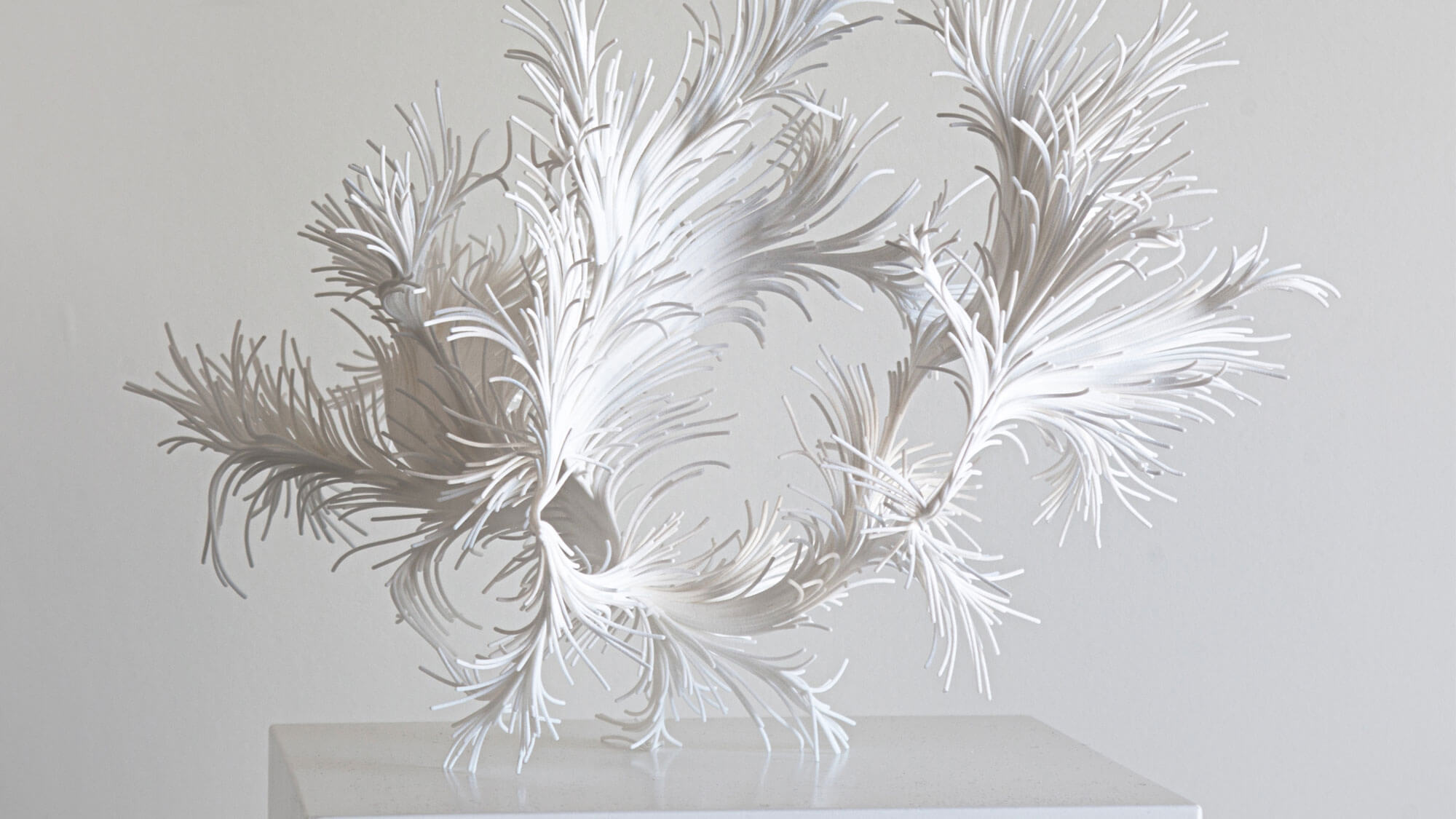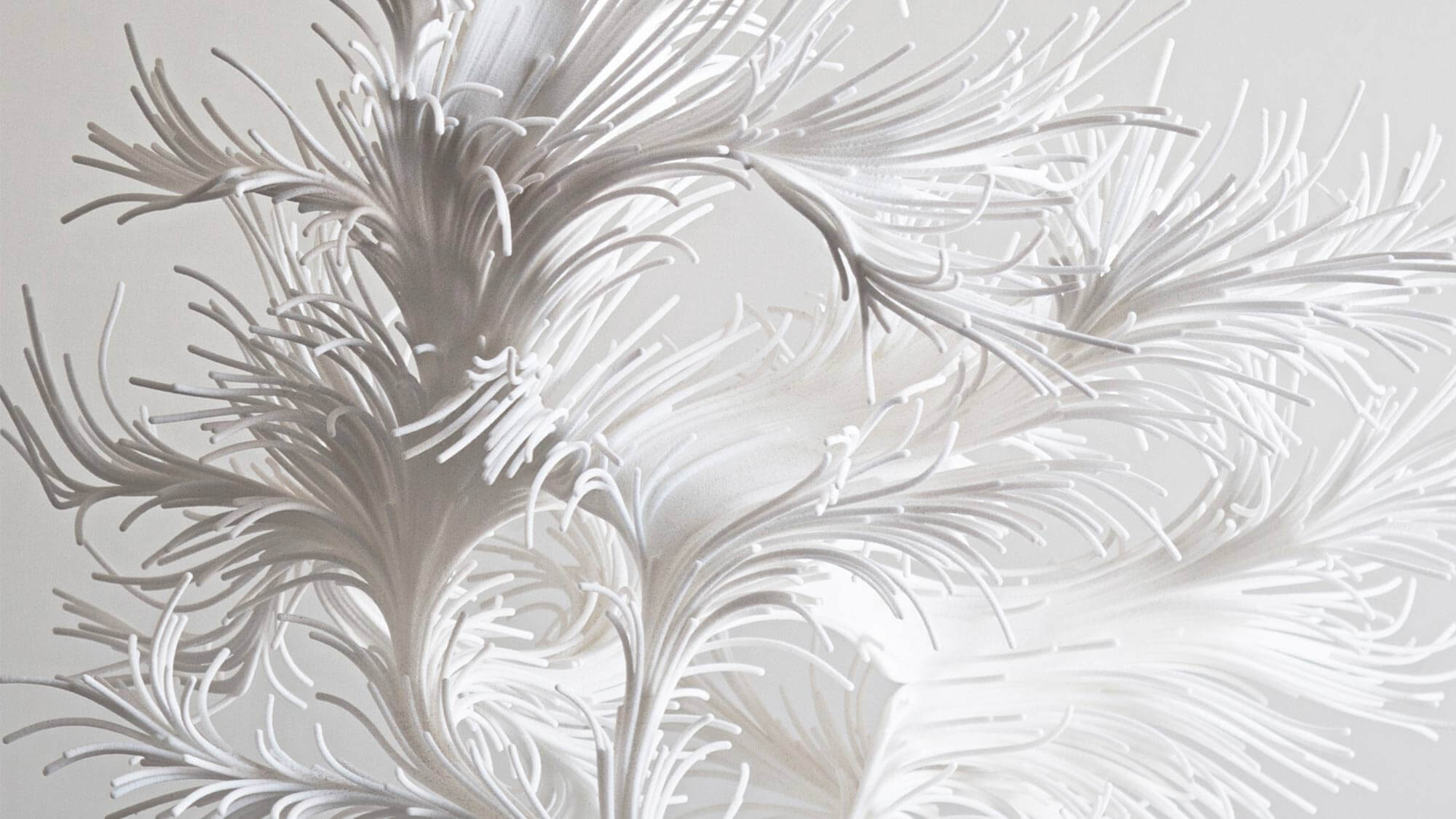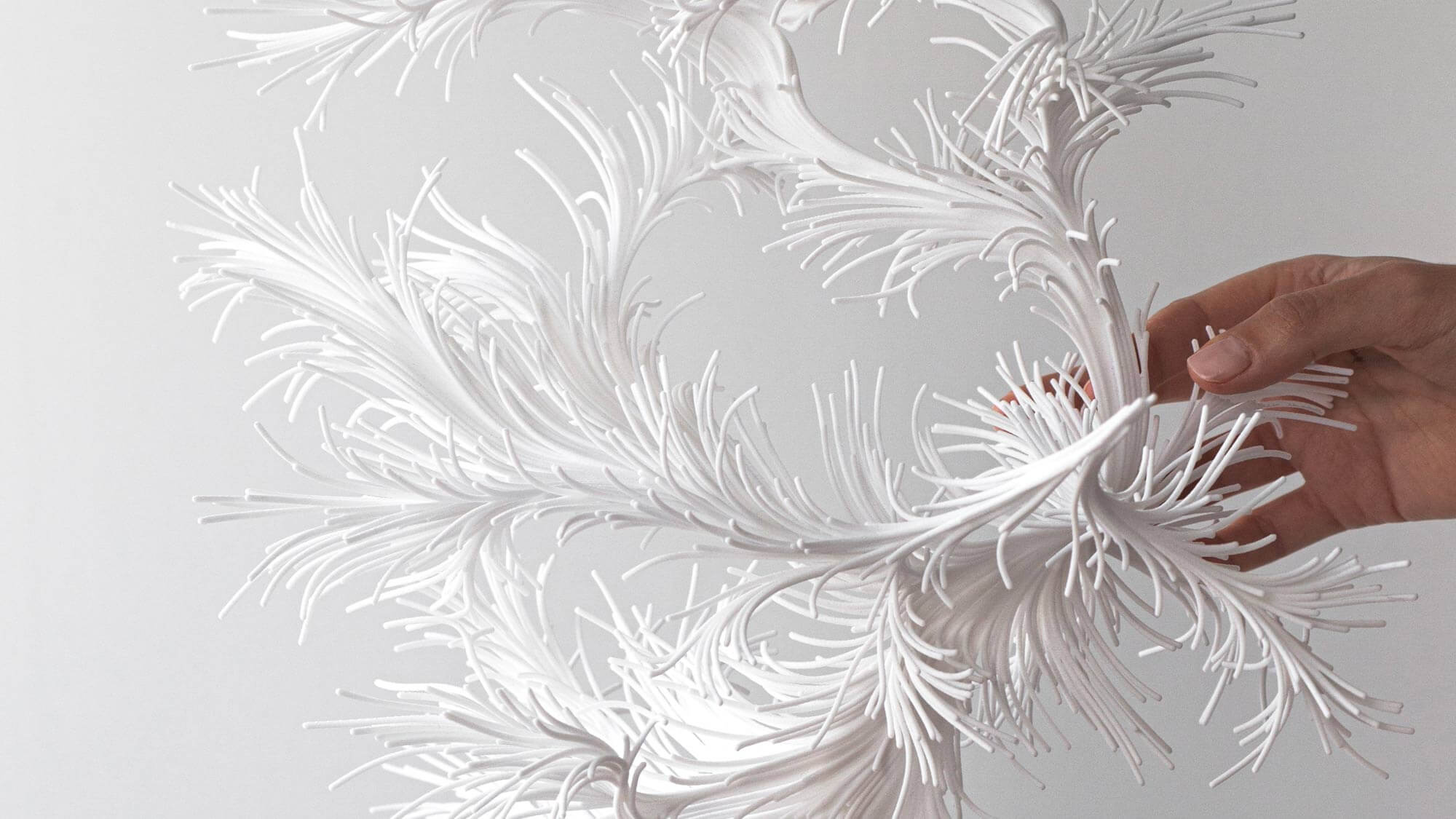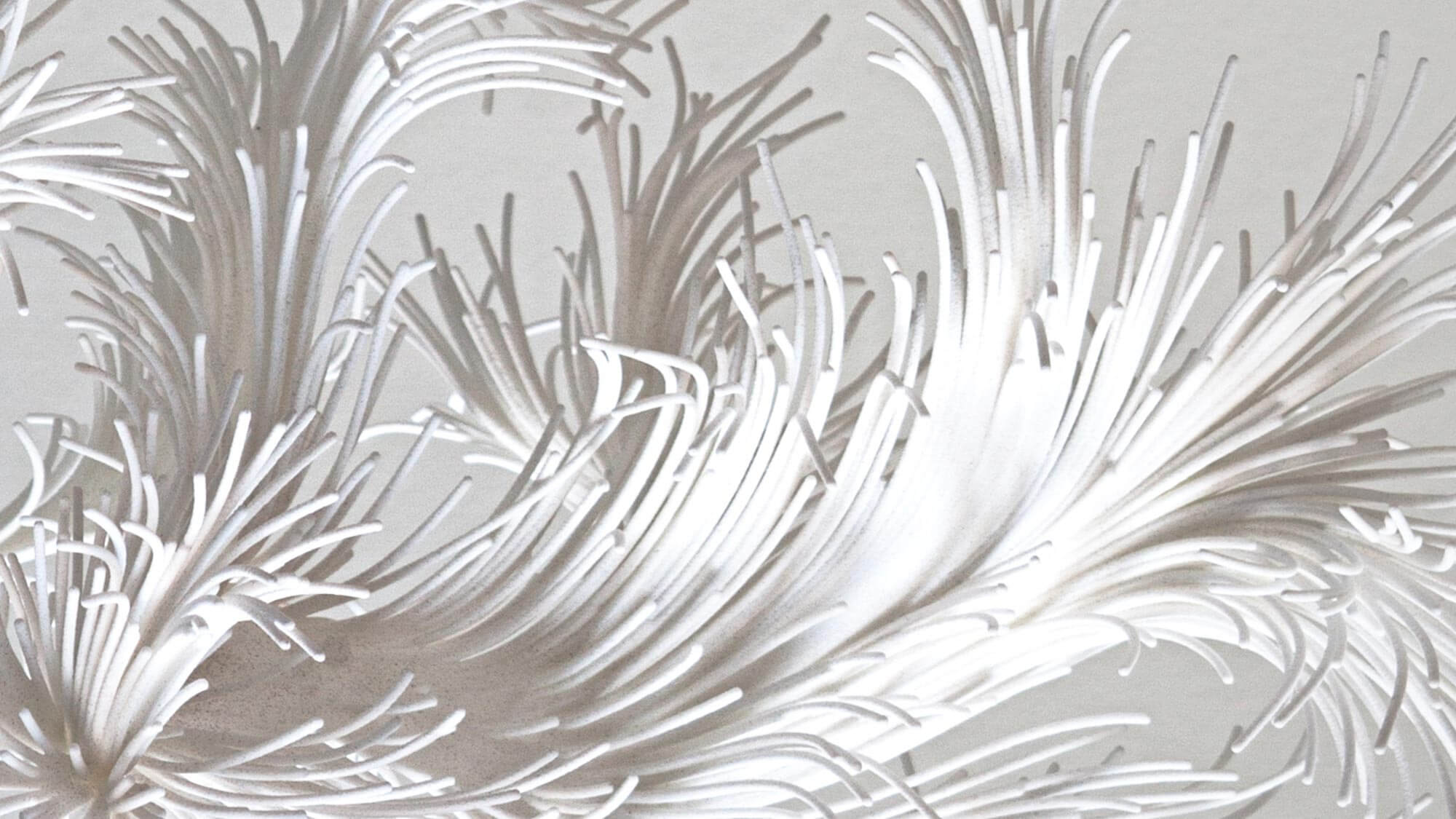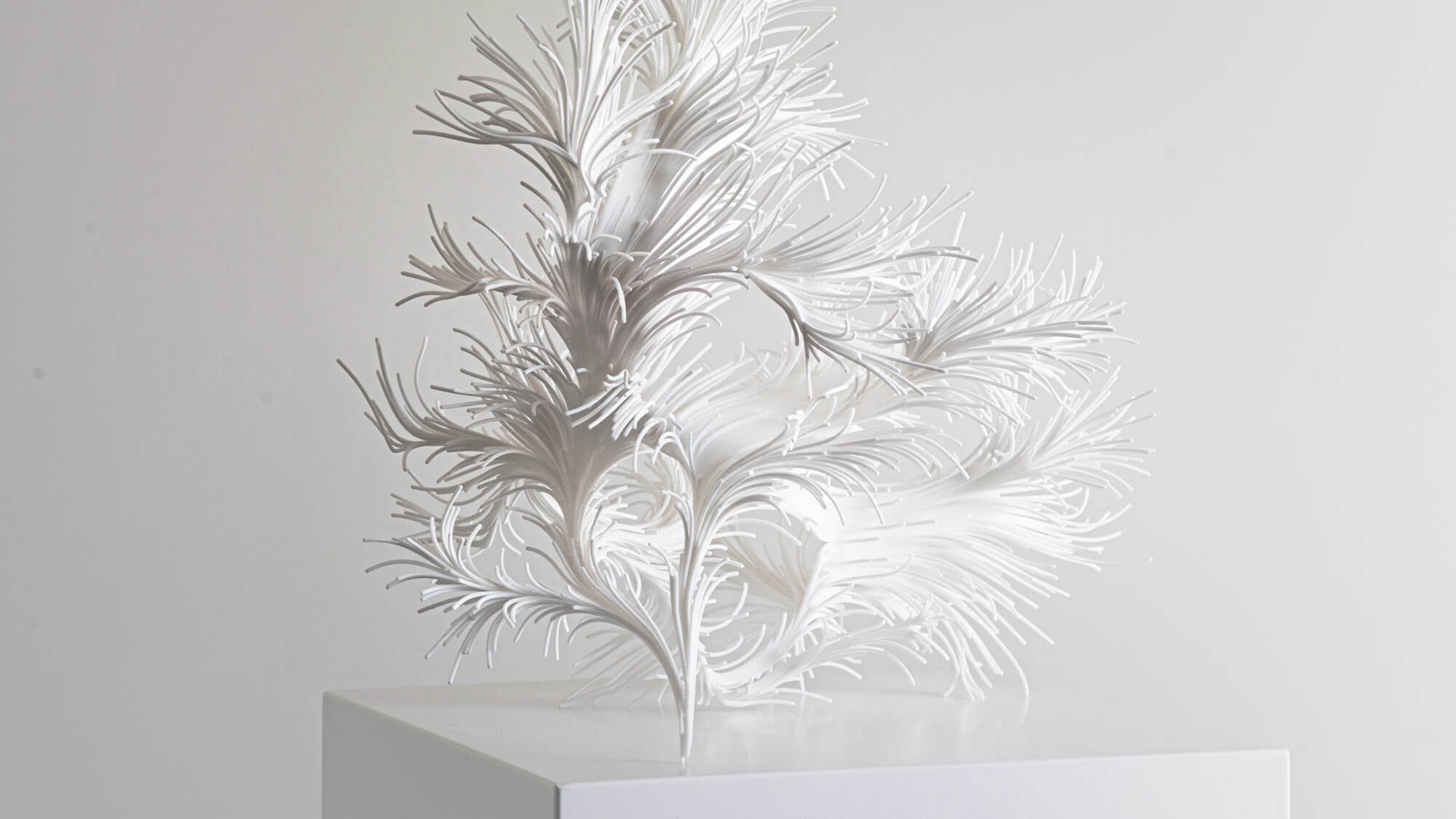Honorary Mention
Breathing Architecture explores the anatomy of air, modelling its flows within the intricate and beautiful structures of human respiration. The project merges art and science to advance the study of human anatomy, connecting artist Filippo Nassetti with researchers at the Barcelona Supercomputing Center through the S+T+ARTS AIR Residencies program.
filipponassetti.com/breathing-architecture-ii
filipponassetti.com/breathing-architecture
Breathing Architecture began with the idea that an artist’s perspective can help solve challenges in simulating complex biological systems. While scientists use equations and mechanical physics, an artist may see the body as a spatial architecture—structures to navigate through high resolution simulations, revealing their beauty and complexity. This fusion of analytical thinking and visual imagination offers a new approach to simulate anatomical systems.
The team used High Performance Computing to explore many ideas. A breakthrough came unexpectedly when a similarity was noticed between the artist’s work and a microscope image of lung tissue. Since these structures can’t be scanned with existing technologies, it was attempted to create a digital model. Ultimately, this led to a new, procedural method to accurately simulate airflow and particle deposition in alveolar tissue. These models of lung microstructures could help simulate how diseases progress, enabling more effective, personalized treatments. The innovation is key to ongoing research on the modelling of tuberculosis.
In this work, beauty and aesthetics are not incidental; they serve as measures of order, enhancing perception, recognition, and memory. The project explores the role of artists in scientific inquiry, while treating scientific data as artistic material. Beyond its scientific impact, Breathing Architecture produced video and physical, 3D printed artworks that describe the microstructures within a breath, creating an experience that invite viewers to explore the anatomy of air and marvel at the hidden beauty of human biology.
Credits
FILIPPO NASSETTI LTD (GB)
Artist and designer: Filippo Nassetti
BARCELONA SUPERCOMPUTING CENTER (ES)
Scientific mentors: Beatriz Eguzkitza, Silvia Ceccacci, Alice Novell, Carlos Arnedo, Jeronimo Calderon, Guillermo Marin
Scientific coordination: BSC Data Analytics and Visualization Group
IN4ART (NL)
Art-driven innovation mentors: Rodolfo Groenewoud van Vliet, Lija Groenewoud van Vliet
UNDACIÓN ÉPICA LA FURA DELS BAUS (ES)
Artistic mentors: Pep Gatell, Javier Iglesias Gracia
MEDIA SOLUTION CENTER BADEN-WÜRTTEMBERG / HIGH PERFORMANCE COMPUTING CENTRE STUTTGART (DE)
Scientific mentors: Uwe Wössner, Leyla Kern, Susanne Malheiros
Project coordinator: Matvey Fridman
PINA/HEKA (SI)
Artistic mentor: Mauricio Valdes San Emeterio
Communication: Taja Kavcic
RCR LAB·A (ES)
Artistic mentor: Carme Pigem
Breathing Architecture was part of “S+T+ARTS AIR – Artistic Innovation for European Resilience,” funded by the European Union from call CNECT/2022/3482066 – Art and the digital: Unleashing creativity for European industry, regions, and society under grant agreement LC-01984767.
Biography
Filippo Nassetti (IT/GB) is a multimedia artist and computational designer, whose work explores the visual languages and design opportunities that emerge from challenging conventional dichotomies
such as natural and artificial, digital and material, human and non-human. Operating across disciplines and scales—including architecture, product design, and art and technology—his practice integrates research on organic forms, computational methods, new media, and advanced manufacturing. Filippo’s work has been exhibited and published internationally.
Jury Statement
We live in an age of hyper-specialization. Take the medical field, for example: making meaningful progress often requires years of rigorous training and deep immersion in a specific area of expertise. Researchers must master what has come before in order to build upon it—to find better ways to understand, treat, or cure disease. And as knowledge continues to expand, specialization deepens further. Yet innovation—the act of creating something both novel and valuable—often demands a shift in perspective. It calls for a willingness to cross disciplinary boundaries and to invite in unfamiliar ways of thinking. Breathing Architecture embodies this shift. It shows how collaborations between scientists and artists can create fertile ground for analogical thinking—the kind of thinking that bridges ideas across seemingly unrelated domains. In this case, imagination met inquiry, and new therapeutic possibilities began to emerge.
